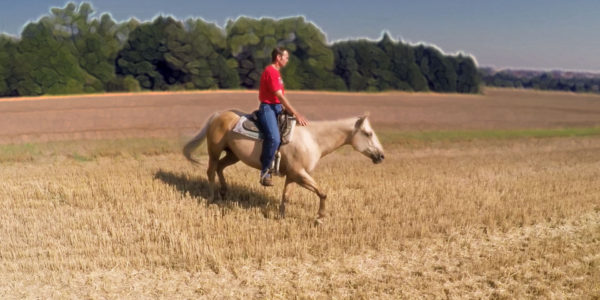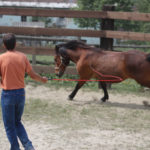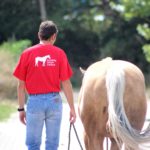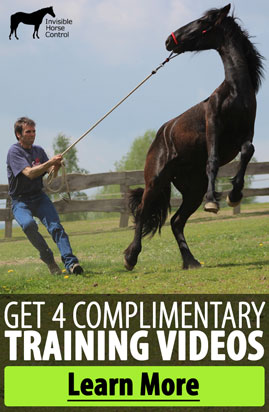Do you have to use too much pressure to get your horse to trot or to canter? Does your horse react too slow when you ask? If that is the case and you want to improve the way your horse reacts
If that is the case and you want to improve the way your horse reacts to your pressure read this article until the very end.
Not every horse reacts the same on the pressure. However, every unspoiled horse can be taught to react to low gentle pressure.
Why doesn’t my horse react on low pressure?
First, let me talk about the main cause. How is it possible that some riders just have to use a lot of pressure to get their to horse listen? How is it possible that their horses don’t listen to them properly even after they start using a whip or spurs?
Imagine this situation, you ask your horse to trot, he doesn’t react properly, so you ask again using a little bit more pressure. It ends up being just enough to get your horse to get to trot, so you are happy with it.
The big mistake
Even though there doesn’t seem to be anything wrong with it, it is the begging of a downward spiral that ends with your horse becoming dull and only reacting on a very high pressure.
This way you are fixing something that is not really causing the problem.
If your horse doesn’t listen the first time you ask, when you use very gentle pressure, what you need to tell him is not that he should get to trot.
Instead, you should tell him that he needs to react to low pressure.
The all important tiny difference that will get your horse to react on low pressure
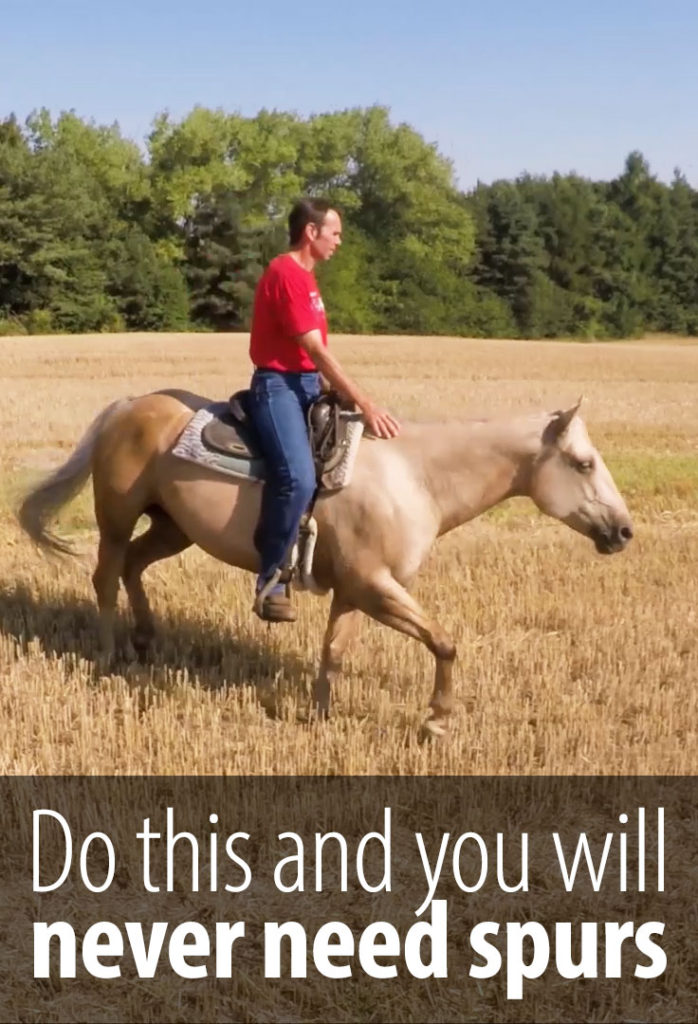
Pin this article on your pinterest!
You can do that in a similar way to what you are used to, with just one small difference.
Instead of just asking your horse again using a bit more pressure, you have to use just enough pressure to make sure your horses’ reaction is going to be exaggerated.
When you ask again, you are not asking him for trot anymore, you are telling him that he should have reacted on the small pressure.
Then after a few quick trot steps, you can gently slow down to walk or to a complete stop. Then ask for trot again using gentle pressure. You can repeat this process until your horse starts reacting on really low pressure.
It works with any exercise
I use the same principle with every exercise, it can be a transition to trot, a side pass or anything else.
Your aim should be to tell your horse “react on low pressure because if you don’t it is going to be more difficult and less pleasant for you”
If you remain consistent, after some time you will start noticing that your horse reacts on lower and lower amounts of pressure.
What about spurs?
In the end, I would like to mention using spurs.
Spurs are a great tool to help you improve the way your horse reacts on low pressure. However, it is absolutely necessary to be aware of when you are just touching your horse with your leg, and when you are already touching him with a spur.
You should only touch your horse with a spur when he does not react on the pressure of your leg. In the way that I have described above. Spurs can help you with teaching your horse to react on lower pressure, but they have to be used correctly.
If you touch your horse with them every time you ask for something, either because you don’t realize or just to make your life easier, you will dull your horse down and make him worse.
If you are not able to differentiate when you are touching your horse with a spur and when you are just touching him with your leg, you should use a whip instead.
If you enjoyed this article, click here to claim my free training series!
